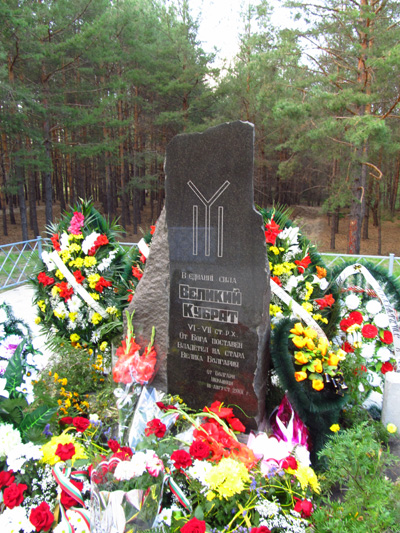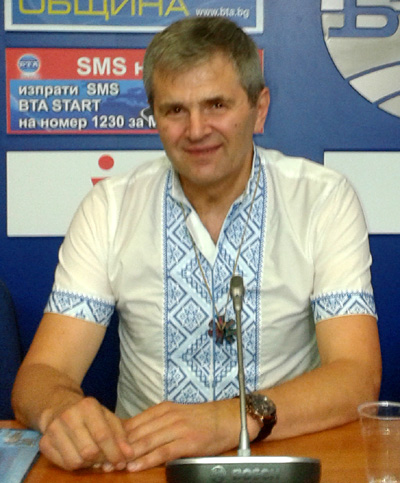We live almost 1,370 years after the death of Khan Kubrat – the person who established the Bulgarian statehood. Back in the 7th c. he unified the proto-Bulgarians in a military-tribal union, named Great Bulgaria. Its territory spread over the plains to the North of the Azov and Black Seas. There were lots of prairie empires in that region back then, but the Bulgarian one was the only survivor through the centuries – thanks to the statehood mastery of Khan Kubrat.
105 years ago fate gifted us with the discovering of that great ruler’s rich funeral. The spot had remained untouched for nearly 13 c. in the Ukrainian village of Mala Pereshchepina. In 1912 two kids came upon a treasure while playing along the river dunes. It turned out to be a big one and only the golden artifacts weighed over 20 kg., while the silver ones were measured to more than 50 kg. A few objects were displayed at the local Poltava Museum and perhaps yet in the early 20th c. most of the treasure was melted under Stalin’s orders, while the rescued objects were handed over to the State Hermitage Museum. Luckily, these turned out to be the major artifacts, proving that the grave belonged to the khan – the sceptre and sabre of Kubrat can be seen there, alongside other authority distinctions.

Hundreds of Bulgarians live in the Ukraine today, as the communities of the Tauri and Bessarabian are the largest ones. Their representatives participate in the region’s governing and are even elected Ukrainian MPs. MP Nikolay Gaber was the one to take up the initiative for the spotting and popularization of Khan Kubrat’s grave. At first a commemorative plate was placed there and in 2012 an all-Bulgarian congregation was held on the site with more than 3,500 participants from all over the world. A new large-scale event of that kind has being prepared for the fall of 2017. One of the goals of the initiative committee formed in Bulgaria and the Ukraine is the fundraising for the building of a new memorial complex, honouring the memory of Khan Kubrat and his successors. “I call this Ukrainian spot ‘the Bulgarian  Jerusalem’ as it is essential for the entire Bulgarian nation. May soon every one of us be able to visit the future complex, to touch the roots of our nation and statehood,” says Bulgarian MP Krassimir Bogdanov, chair of the organizational committee of the autumn congregation.
Jerusalem’ as it is essential for the entire Bulgarian nation. May soon every one of us be able to visit the future complex, to touch the roots of our nation and statehood,” says Bulgarian MP Krassimir Bogdanov, chair of the organizational committee of the autumn congregation.
He also expressed his content that most of his colleagues had supported the memorial initiative with their own money.
“The initiative committee also enjoys the full support of the Ukrainian and the Poltava Oblast authorities,” says Engineer Delyan Damyanovski, executive director of the National Association of Municipal Councils in Bulgaria. “We felt really proud when, upon entering the Mala Pereshchepina mayoralty, we saw the Bulgarian flag placed alongside the Ukrainian one. It can be seen at many spots there. We have the full support of the Ukrainian authorities for our congregation and also for the construction of the memorial complex.”

English version: Zhivko Stanchev
There is a map which helped usher in the birth of modern Bulgaria during the Russo-Turkish War of 1877-1878. The Austro-Hungarian researcher Felix Kanitz (1829 – 1904) was the first West European to have travelled to more than 3,200 towns and villages..
On 3 March, Bulgaria celebrates the 147th anniversary of its liberation f rom five centuries of Ottoman rule. The day was declared a national holiday in 1990 by a decision of the National Assembly. The Treaty of San Stefano, signed on 19 February..
Today is Cheesefare Sunday. According to Orthodox tradition, this day is observed on the eve of Great Lent, when Christians seek and give forgiveness to each other . It is also known as Sirni Zagovezni because it marks the last day before Lent, when..

+359 2 9336 661
